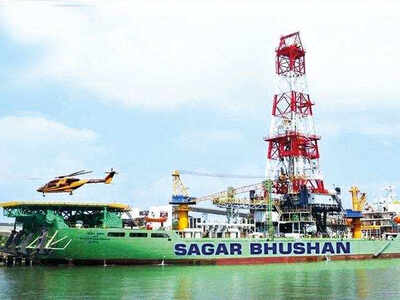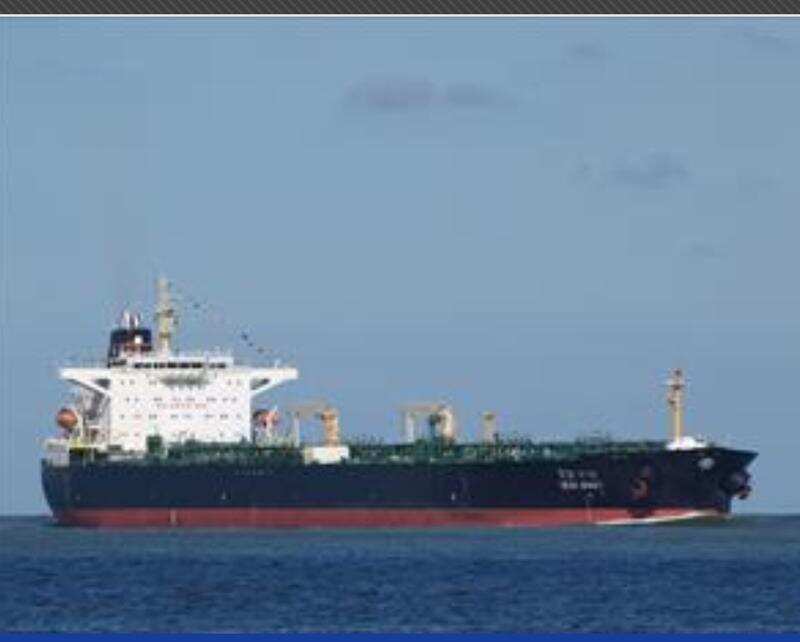- News
- City News
- ahmedabad News
- Gujarat: Three vessels rescued from Cyclone Tauktae fury
Gujarat: Three vessels rescued from Cyclone Tauktae fury

Gujarat Maritime Board was also a part of the rescue operation with Captain Ashwin Solanki, the chief nautical officer, tracking the vessels from the control room and coordinating with the agencies concerned
AHMEDABAD: Averting a P-305-like tragedy in which 75 lives were lost after it capsized in the Arabian Sea hours after cyclone Tauktae hit the Mumbai coast on May 17, the Indian Navy, Coast Guard and ONGC successfully rescued three vessels that had drifted off Mumbai and reached Gulf of Khambhat. There were about 330 crew members on board drilling ship Sagar Bhushan, barge Support Station 3, and storage tanker Desh Bhakt.

Sagar Bhushan was drifting in the northern direction with speed of four knots. ONGC’s self-propelled rig, carrying 101 personnel, had been anchored off Mumbai shore. However, strong winds caused by cyclone Tauktae broke the vessel loose from its eight anchors, and also damaged the rudder.
“Sagar Bhushan was dangerously close to land. A flat-bottomed ship, it had no power to propel and could have broken in two had it been grounded. It was a dramatic moment with the sea getting rough and the area engulfed in darkness. In the nick of time, we controlled the operations and brought her to the safety of Mumbai harbour,” said a senior defence official, who spoke on condition of anonymity.
The option of taking the ship to nearby Pipavav Port was ruled out as the area was badly hit by the cyclone.
He said that unlike in the case of Barge P-305, where a collision had ripped a hole, the three vessels in Gujarat were in a much safer position.
Gujarat Maritime Board was also a part of the rescue operation with Captain Ashwin Solanki, the chief nautical officer, tracking the vessels from the control room and co-ordinating with the concerned agencies.
Tugboat Triton Liberty from Mumbai High was towing accommodation barge Support Station 3 (SS03). The cyclone led to flooding in the steering gear platform of Triton Liberty even as SS03, with 202 personnel on board, continued to drift towards Gulf of Khambhat.
In all, ONGC dispatched about eight crafts to carry out rescue operations in Gujarat. On May 18, INS Talwar reached SS03 and tried to transfer crew members using a life raft. However strong winds and rough seas prevented this. Eventually, tugboats were used to tow it to Mumbai.
Both the vessels passed through Tapti oil field and any major accident could have led to oil spill in the area, said a GMB official. The crafts dispatched by ONGC included tugboats Cheel, Great Ship Anjali, SCI Urja, Ababeel and MSV Samudra Sevak, among others.
“ONGC vessels, along with the Indian Navy, were part of the search-and-rescue operations till the end,” said an ONGC official.
Another vessel Desh Bhakt, a storage tanker by Shipping Corporation of India (SCI) at Panna Oilfield off Mumbai, had parted from the anchor chains and was drifting towards Gulf of Khambhat on May 17. It lost all communications with SCI. The vessel reached Mumbai safely on May 18 with the assistance from the GMB and Indian Coast Guard.
“There were times when these ships were in danger of capsizing mid-sea. It felt that abandoning the vessel was the only way to save the crew members. But the Indian Navy felt it would be premature to do so,” said the defence personnel.
ONGC has 342 offshore installations with 243 of them being fixed, unmanned platforms that can’t move but can be secured. The 99 manned installations include barges, vessels and rigs, among others. Of these, 94 had moved to safer shelters after advisory from the government about the approaching storm.
Of the 7,665 people working offshore, 6,700 had moved to safer zones and were safe except for those on 3-4 barges and tugboats,” said sources in ONGC.

Sagar Bhushan was drifting in the northern direction with speed of four knots. ONGC’s self-propelled rig, carrying 101 personnel, had been anchored off Mumbai shore. However, strong winds caused by cyclone Tauktae broke the vessel loose from its eight anchors, and also damaged the rudder.
“Sagar Bhushan was dangerously close to land. A flat-bottomed ship, it had no power to propel and could have broken in two had it been grounded. It was a dramatic moment with the sea getting rough and the area engulfed in darkness. In the nick of time, we controlled the operations and brought her to the safety of Mumbai harbour,” said a senior defence official, who spoke on condition of anonymity.
The option of taking the ship to nearby Pipavav Port was ruled out as the area was badly hit by the cyclone.
He said that unlike in the case of Barge P-305, where a collision had ripped a hole, the three vessels in Gujarat were in a much safer position.
Gujarat Maritime Board was also a part of the rescue operation with Captain Ashwin Solanki, the chief nautical officer, tracking the vessels from the control room and co-ordinating with the concerned agencies.
Tugboat Triton Liberty from Mumbai High was towing accommodation barge Support Station 3 (SS03). The cyclone led to flooding in the steering gear platform of Triton Liberty even as SS03, with 202 personnel on board, continued to drift towards Gulf of Khambhat.
In all, ONGC dispatched about eight crafts to carry out rescue operations in Gujarat. On May 18, INS Talwar reached SS03 and tried to transfer crew members using a life raft. However strong winds and rough seas prevented this. Eventually, tugboats were used to tow it to Mumbai.
Both the vessels passed through Tapti oil field and any major accident could have led to oil spill in the area, said a GMB official. The crafts dispatched by ONGC included tugboats Cheel, Great Ship Anjali, SCI Urja, Ababeel and MSV Samudra Sevak, among others.
“ONGC vessels, along with the Indian Navy, were part of the search-and-rescue operations till the end,” said an ONGC official.
Another vessel Desh Bhakt, a storage tanker by Shipping Corporation of India (SCI) at Panna Oilfield off Mumbai, had parted from the anchor chains and was drifting towards Gulf of Khambhat on May 17. It lost all communications with SCI. The vessel reached Mumbai safely on May 18 with the assistance from the GMB and Indian Coast Guard.
“There were times when these ships were in danger of capsizing mid-sea. It felt that abandoning the vessel was the only way to save the crew members. But the Indian Navy felt it would be premature to do so,” said the defence personnel.
ONGC has 342 offshore installations with 243 of them being fixed, unmanned platforms that can’t move but can be secured. The 99 manned installations include barges, vessels and rigs, among others. Of these, 94 had moved to safer shelters after advisory from the government about the approaching storm.
Of the 7,665 people working offshore, 6,700 had moved to safer zones and were safe except for those on 3-4 barges and tugboats,” said sources in ONGC.
FacebookTwitterLinkedinEMail
end of article
Quick Links
Delhi Air PollutionDelhi TemperatureChennai WeatherBangalore TemperatureCovid vaccination centres in DelhiCoronavirus in DelhiRTPCR test in GurgaonHyderabad RainPollution level in BangaloreDelhi SmogDelhi TemperatureNoida AQIGurgaon AQI todayFire in MumbaiMumbai RainsCovid 19 RT PCR Test in NoidaDelhi AQI todaySrinagar encounter
